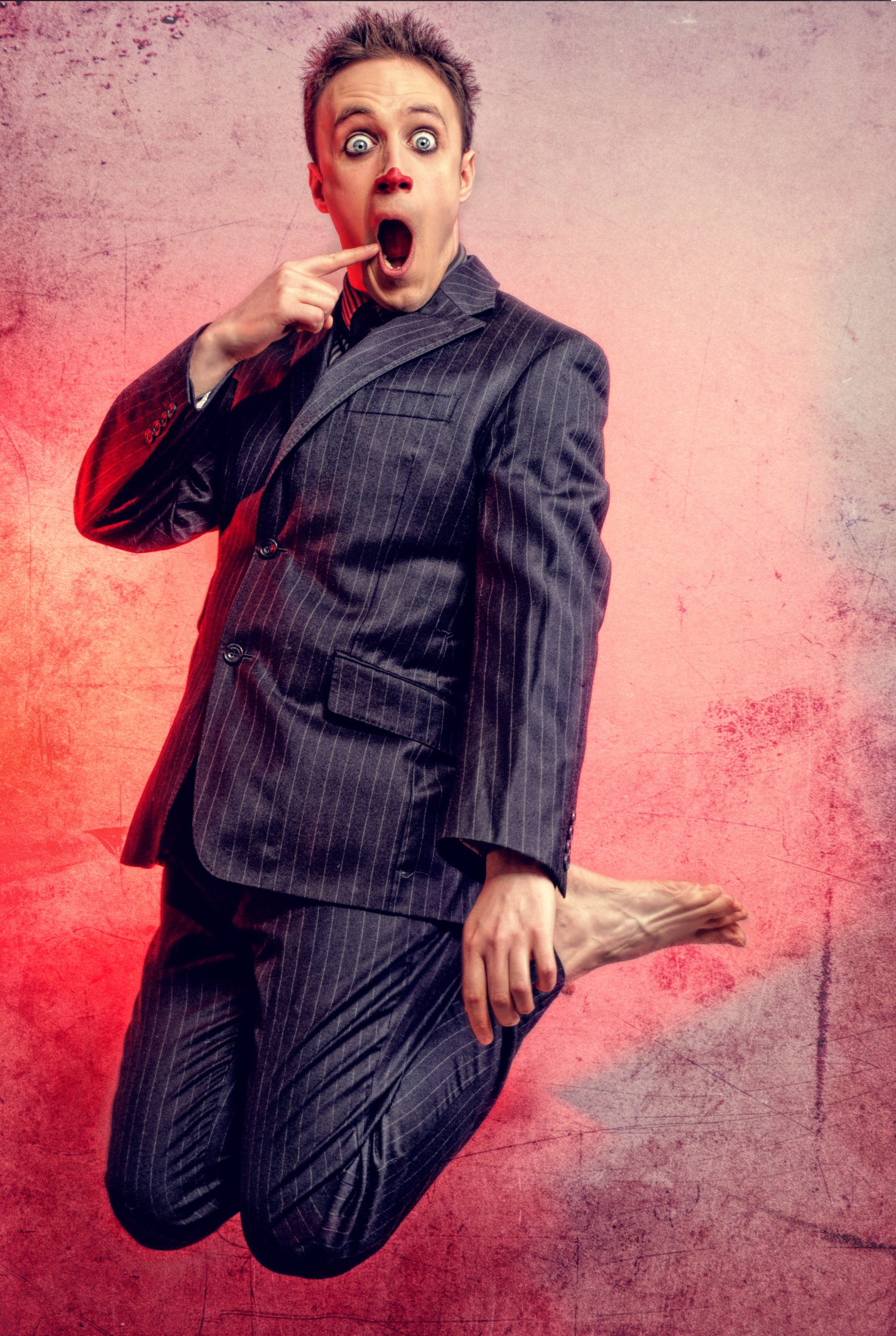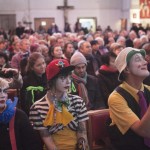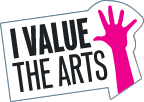How did you get started?
The truth is I got started before I can remember. There are photos of me at the age of 4 forcing extended family members to come into the living room to watch my clown show. I charged them 20p each to buy a ticket to the show. That’s 48p in today’s money. Being a clown was clearly a childhood dream of mine.
Later on in life, as a well rounded teenager, I ended up performing at parties as a way to make a bit of extra money. I did anything I could think of, from magic to balloon modelling to staff twirling. From here I met people who took me to magic conventions. From there I met people who taught me escapology. From there I was introduced to people who taught me other circus skills. In a roundabout way, I ended up performing my own style of comedy variety acts. One day, I decided to drop the voice. Bit by bit I ended up dropping tricks and gimmicks until I was just entertaining people with my stage persona.
After many years, a compere introduced me as a clown, which totally took me by surprise. By just saying yes to opportunities I had literally evolved into my childhood dream without really noticing. At this point, I decided it was time to embrace the clowning, get some training and devote my life to it. There was clearly no escaping.
What advice would you give your younger self and other young performers?
Following on from the above, if you’ve not quite settled on precisely where you want to be, or if you have and you aren’t there yet, say yes to opportunities, even if they seem like they don’t fit. If you’d asked me as a teenager whether I would work in the burlesque industry I would have raised an eyebrow, but now it’s a large percentage of my work and it’s a community that I adore being a part of.
My second piece of advice is to choose something that you want to learn, set a target and stick with it. You can do this alongside taking opportunities elsewhere, as long as you spend at least half an hour a day working towards a set target in your core area of interest. Stick with it until you have achieved the target you set. I was too easily swayed when I was younger, and this set me back a long way as I ended up with small bits of practice in lots of areas, but not being polished enough in any of them to use them professionally.
What’s the weirdest skill on your CV?
Animatronic stripping puppets. I don’t think that needs any explanation.
What’s your advice for a first time audience?
If you’re a first time clown audience, forget everything you think you know about clowning. On the whole, modern clowning is nothing like the media portrayal of it. In fact, you already watch many successful clowns without knowing it, whether it’s Robin Williams, Sacha Baron Cohen or Rowan Atkinson. Statistically, you are not scared of me – even if you think you are scared of clowns. Go to a clown show, sit back, and marvel at the absurdity of everyday life.
Which other artist would you most like to collaborate with?
I’d love to do a two hander with Sir Ian McKellen. just imagine how furious Patrick Stewart would be when he discovered he’d been sidelined.
What is the inspiration behind the characters you create?
I have one main clown persona that I use for performance, despite the variety of characters that may come across in some of my routines. He can do things that I can’t, so when I need to create a new character, I send my clown into the situation to see what he makes of it. I am only ever playing the one clown, he plays everything else for me. In other words, I don’t need inspiration for characters, because I cheat by delegating it … to my own clown.
Take us through your process, from idea to performance.
This takes years. Ideas will come from a conversation, a bad pun, something I’ve seen on the street, sometimes a prop I’ve seen that sparks off an idea. Anything that feels beautifully absurd or absurdly beautiful. Occasionally it comes from historical research. For example I was fascinated by the simplicity of the art of chapeaugraphy, and the way in which it is present throughout most of the history of vaudeville and burlesque, but sadly lacking these days. Discovering that old popular arts such as hand shadows and chapeaugraphy can still be relevant today fascinates me.
By the time I actually start to bring the idea to life in my studio, I would have written three or four different versions in my head. The workshop time consists of working out which of these routes works best for my character, and then once settled there’s a few weeks of refining it in rehearsal space.
You only really know how a clown piece will develop when you put it in front of an audience. Things change all the time; often onstage and in the moment. That’s the joy of clowning. You can have something planned down to the finest detail, but you still have the freedom to explore the moment each time an audience member throws in something you weren’t expecting, or a new idea pops into your head. A new clown routine is never actually finished – it will continue to change throughout performing it as society’s tastes and expectations change.
And if you weren’t a performer…?
I wouldn’t be me.







Leave a Reply